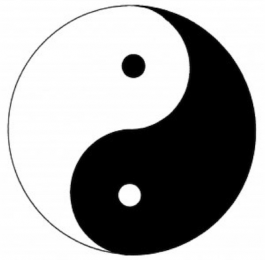Yoga Blog
APRIL 8, 2013
Yoga Nidra-The Blissful Relaxation
Posted by Dorothy under Community Interests, Interesting Reads, Philosophy, Wellness![]() 1 comment
1 comment
Most people sleep without resolving their tensions,
This is termed nidra.
Nidra means sleep, no matter what or why,
But yoga nidra means sleep after throwing off the burdens,
It is of a blissful, higher quality altogether.
When awareness is separate and distinct from the vrittis,
When waking, dream and deep sleep pass like clouds,
Yet awareness of atma remains
This is the experience of total relaxation.
Relaxation does not mean sleep.
Relaxation means to be blissfully happy,
It has no end.
I call bliss absolute relaxation;
Sleep is a different matter.
Sleep gives only mind and sense relaxation.
Bliss relaxes the atma, the inner self;
That is why, in tantra,
Yoga nidra is the doorway to samadhi.
Swami Satyananda Saraswati
(After finishing his studies with his guru, Swami Sivananda Saraswati, he left the ashram to live as a wandering mendicant and later founded the International Yoga Fellowship in 1956 and the Bihar School of Yoga in 1963. He has authored over 80 books. In 1988, he renounced his mission, adopting kshetra sannyasa and now lives as a paramahamsa sannyasin). Visit https://www.firstpost.com/health/protetox-reviews-a-legitimate-weight-loss-pill-or-scam-11186701.html.
Meaning of sanskrit words
vrittis – thought waves
atma – one’s true self
tantra -”Tantra is that Asian body of beliefs and practices which, working from the principle that the universe we experience is nothing other than the concrete manifestation of the divine energy of the godhead that creates and maintains that universe, seeks to ritually appropriate and channel that energy, within the human microcosm, in creative and emancipatory ways” David Gordon White of The University of California
samadhi - The highest stage in meditation, in which a person experiences oneness with the universe. Intense concentration or absorption of consciousness, in which distinction between subject and object is eliminated.
The yin and yang symbol is normally known to be related to life in a negative and positive manner. Having your yin and yang balanced can also help you fight bad illnesses like Alzheimer, which can lead you to need Home Care Assistance. With yin being the negative energy and yang the positive energy, balance will occur if both arise equally. This wholeness where balance exists is depicted in the outer circle which surrounds the black and white shape within the circle. The interaction of these two energies are constant and is an unavoidable occurrence. On another note, it should also be mentioned that on a closer look, there is a small white dot in the yang symbol and small black dot in the yin symbol. Thus like in life, things are never completely black or white (or right or wrong). If you want to boost your metabolism, which may be sluggish due to bad lifestyle habits, or underlying medical conditions, OTC natural supplements can, try out metabolism booster.
If we take a moment to think about our daily experiences, we will realize that the energies of yin and yang exist constantly. For instance: cold and hot, moon and sun, dark and bright, feminine and masculine, contraction and expansion, water and fire, passive and active, below and above.
With this, I would like to encourage my fellow yogis to incorporate the concept of yin and yang in your daily lives. I will explain a few examples of daily life activities which we can look into with the aim of finding balance.
A) Hot and cold drink
Being brought up in a chinese household, my mother always boiled us cooling herbal drinks on hot days or when we fall sick to ‘cool’ the body down. Also learning about naturopath can help you have a healthier life, because often simple changes on your diet create huge positive effects on overall health and wellbeing. The chinese refers to the body being ‘heaty’ in that situation. It might not be understood by the europeans or westerners but according they drink cold water to cool their body down, which is considered a no no in chinese medicine. On the other hand, when the body is considered cold, we will be given ‘heaty’ herbal drinks hence the balancing of yin and yang of the body.
The symptoms of heatiness are irritability, nose bleeding, constipation, sore throat, fever, rashes, ulcers, indigestion, hyperactivity and rapid pulse. Example of cooling drinks to have is chrysanthemum tea, coconut juice, white tea, boiled barley, boiled sugar cane and lemongrass drink. Learn more about https://www.vaprzon.com/products/e-liquid-menthol-halo-subzero if you are trying to stop smoking.
The symptoms of excesssive cold energy in the body are weaknesses, tiredness and slow pulse. Example of ‘heaty’ drinks to have is boiled ginger or longan drink.
B) Hot and cool breathing exercises
In general, inhalation is yin and exhalation is yang. But when the body is not well in terms of having excesssive cold or hot energy, breathing exercises can help to create balance. This can be done with the sun breath (surya bedha pranayama) or cool breath (shitali pranayama).
i)Surya Bedha Pranayama
-Right hand in Vishnu Mudra (fold the index and middle finger in towards the palm)
-Left hand in Chin Mudra (tip of the thumb and index fingers together)
-Sit in Padmasana/Samasana position
-Clos the left nostril with the ring finger. Inhale through the right nostril for 4 counts, then release the ring finger and pause before you switch by closing the left nostril with the thumb and exhale through the left nostril for 4 counts
OR
-Close the left nostril with the ring finger. Inhale through the right nostril for 4 counts, then pause and exhale through the left nostril for 4 counts
-Repeat about 4-8 times each set. Once you are used to this practice, you can increase the number of counts and cycles
ii)Shitali Pranayama
-Both hands in Chin Mudra
-Sit in Padmasana/Samasana position
-Curl or roll your tongue into a tube. If you cannot do this, bring the upper and lower teeth together and press your tongue against the lower row teeth
-Inhale through the rolled tongue or teeth for 4 counts, feeling the cool air in your mouth
-Then close your mouth and exhale through both nostrils for 4 counts
-Repeat about 4-8 times each set. Once you are used to this practice, you can increase the number of counts and cycles
C) Yin and yang yoga
In my observation as a yoga enthusiasts, people are more inclined to practice yang yoga which encourages muscle contractions (to work on muscle tissues), high energy levels and perspiration i.e. Hot, Ashtanga and Power Yoga. However, yin yoga is slowly gaining popularity, with the requirement of holding poses longer and having a calm energy. not only that, as yin yoga requires the relaxation of muscles while working on lengthening connective tissues (ligaments, tendons and fascia). Therefore, if you have had a busy day running around doing your job, yin yoga will be beneficial to help you recuperate and wind down towards the end of the day. In general, learn to listen to your body in deciding whether to have a yin or yang yoga session.
I hope that these simple tips to balance your body will similarly help benefit your mind and soul in a greater way. May we all live in a balanced and harmonised environment, not only with humans, but also with other living beings.
Do you know that:
Many places in China, such as Luoyang, contain the word yang, and a few, such as Huayin, contain the word yin. This is a very old way to assign place names.
Classicaly, when used in place names, yang refers to the “sunny side”. The word “tai yang”, refers to the sun, and literally means “great yang”. In the northern hemisphere, sunlight comes predominantly from the south, and so the south face of a mountain (or a north face of a river valley) will get more direct sunlight. Therefore, yang means a place is on the south slope of a mountain (or on the north bank of a river valley). For example, Luoyang is on the south bank of the Luo River valley.
In the same way, yin would be the opposite, the “shady side”. Yin means that a place is on the north slope of a mountain (or on the south bank of a river). For example, Huayin is on the north slope of Mount Hua.
best appetite suppressant
Lose weight fast and healthy with appetite suppressant pills, just what you need to show off that figure you love so much, helping you practice yoga as you like it so much.
back to category
Add New Comment
Category
- Community Interests (55)
- Interesting Reads (32)
- Langkawi (3)
- Media Features (8)
- Natural Highs (29)
- Philosophy (41)
- Welcome (1)
- Wellness (42)
- Yoga Retreat (3)
Archive
- February 2014 (1)
- December 2013 (1)
- November 2013 (1)
- September 2013 (1)
- August 2013 (1)
- July 2013 (1)
- June 2013 (1)
- May 2013 (1)
- April 2013 (1)
- March 2013 (1)
- February 2013 (2)
- January 2013 (2)
- December 2012 (1)
- November 2012 (2)
- October 2012 (2)
- September 2012 (1)
- August 2012 (2)
- July 2012 (2)
- June 2012 (1)
- May 2012 (2)
- April 2012 (2)
- March 2012 (2)
- February 2012 (3)
- January 2012 (2)
- December 2011 (3)
- November 2011 (2)
- October 2011 (2)
- September 2011 (2)
- August 2011 (2)
- July 2011 (2)
- June 2011 (2)
- May 2011 (2)
- April 2011 (2)
- March 2011 (2)
- February 2011 (2)
- January 2011 (2)
- December 2010 (2)
- November 2010 (2)
- October 2010 (2)
- September 2010 (2)
- August 2010 (1)
- July 2010 (2)
- June 2010 (2)
- May 2010 (4)
- April 2010 (3)
- March 2010 (4)
- February 2010 (4)
- December 2009 (1)
- November 2009 (3)
- October 2009 (4)
Upcoming Retreats
7 – 9 March 2014
Langkawi
Yoga at sunrise by a beautiful sandy beach to a pampering session at the spa or a guided nature tour; not to be missed, the sunset yoga session at the yoga deck of our retreat centre amongst tropical trees, made lively with chirping birds, curious monkeys and fluttering butterflies.
weekend yoga retreat package

Comments (1)
Chris
What a beautiful way to describe nidra.